Cyrene
Q44112Cyrene: main Greek settlement in the Cyrenaica, the northeastern part of modern Libya, modern Shahhat.
Origins
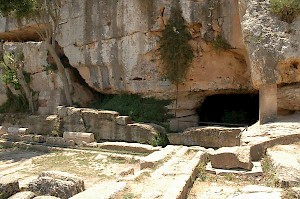
Cyrene was founded in c.630 BCE as a colony of the Greek island town Thera, which had become (or was perceived to be) too crowded. The first colonists settled at an island called Platea in front of the Libyan coast (modern Bomba). Later, they occupied a coastal strip called Aziris, and finally, after concluding a treaty with the native Libyans, they founded the town Cyrene, the capital of the fertile Cyrenaica. The "Fountain of Apollo" offered sufficient water for a flourishing city.
The leader of the settlers was Aristoteles, but he was called Battus (which means "stammerer" in Greek, but is probably a Libyan royal title). In the following centuries, Battus' descendants, the Battiads, ruled Cyrene.
| Aristoteles Battus I |
|
| Arcesilas I |
|
| Battus II the Blessed |
|
| Arcesilas II the Tough |
|
| Battus III the Lame |
|
| Arcesilas III |
|
| Battus IV the Fair |
|
| Arcesilas IV |
|
Archaic Age
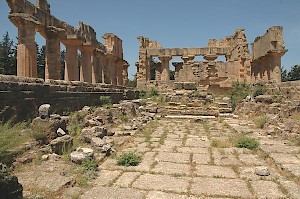
Although Cyrene was founded after a treaty with the natives, the relations between the Greeks and Libyans were often strained. After all, the native population had not yet reached the Iron Age, when it was suddenly forced to negotiate with the technologically advanced Greeks, who threatened every aspect of Libyan society. The natives could be restless and the settlers sometimes felt threatened. As a consequence, during the reign of Battus II, new settlers were invited from the homeland. They received Libyan land, which caused great resentment. The Libyans requested the Egyptian king Apries to assist them in a war against the Greeks, but the pharaoh was defeated (570).
At this time, there were social tensions in the Greek homeland. As usual, the aristocrats were competing for glory and honor, but the situation had become more complex because rich non-aristocratic land-owners were beginning to demand political influence. In many cases, one of the aristocrats became sole ruler ("tyrant") in cooperation with the non-aristocrats; he gave them political rights and could reign the town for some time. The same conflicts occurred in Cyrene, but this time, the kings were able to survive.
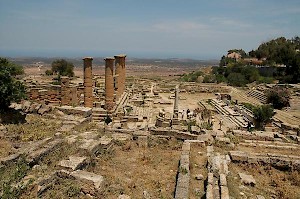
However, the troubles were very serious. When Arcesilas II became king in c.560, he had to cope with serious opposition, which was led by his brother Learchus. In the end, the members of the opposition left Cyrene, settled in a Libyan city, Barca, and allied themselves to the Libyans. When Arcesilas attacked the Libyans, he was defeated (7,000 soldiers were killed), and was murdered by his brother (c.550). Queen Eryxo retaliated: Learchus was assassinated too, and her son Battus III became king.
He realized that he was not strong enough to rule effectively, and invited Demonax, a Greek from Mantinea, who was to give Cyrene a new constitution. He divided the people into three groups: those who came from Thera, those who originated from the Peloponnese and Crete, and those who came from other Aegean isles. The king's power was restricted to religious tasks. However, the monarchy remained, which was a rare development in the Greek world.
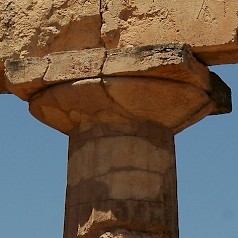
At this point, the dynasty of Cyrene started to look for support against the Libyans and the aristocracy. It was found in Egypt: Battus III married his daughter Ladice to king Amasis, and the alliance was concluded.
In 525, the Persian king Cambyses conquered Egypt, and king Arcesilas III of Cyrene sided with the new ruler in the east. The Persians granted an alliance, and Arcesilas felt strong enough to demand the royal prerogatives again, which resulted in civil strive in his city. In 518, the opposition expelled the king, but he went to Samos, where he recruited an army. (There may be a connection to the contemporary attempt by the Spartan prince Dorieus to found a city in the neighborhood.) Using these soldiers, he defeated his opponents, and returned to Cyrene. His men received land, but ultimately, Arcesilas was unable to rule, and fled to his father-in-law, the Libyan king Alazeir of Barca. However, both men were killed.
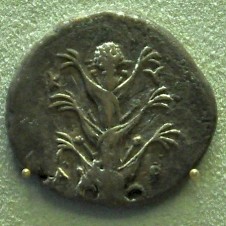
At this moment (513?), the Persian alliance proved its worth. Queen Pheretima, who had lost her father and husband, invited the Persians to Cyrene. The satrap of Egypt, Aryandes, accepted the invitation, and conquered Cyrene. The new king, Battus IV, was no longer the ruler of an independent kingdom, but a puppet. It is possible but not likely that he was able to throw of the Persian yoke after the disastrous expedition of king Xerxes to the Greek mainland (480-479).
Classical Age
During Battus' reign, Cyrene was a very wealthy town, which exported wheat, barley and olive oil, and monopolized the trade in silphium, an unidentified plant with aromatic and medicinal properties.
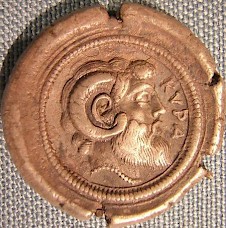
One of the remarkable religious developments in Cyrene was the introduction of a new god, Amun, the oracle god of the Siwa oasis. The Greeks identified this Libyan-Egyptian divinity with their own supreme god Zeus, and rendered his name as Ammon, which is a nice wordplay: ammos was the Greek word for sand - in other words, the Greeks aptly called the god Sandy Zeus. From Cyrene, the cult spread to the Greek mainland, and was especially propagated by the famous poet Pindar (522-445).
After Battus' reign, which lasted more than forty years, his son Arcesilas IV became king (c.470). He was one of the celebrities of his age, having won the chariot race of 462 at the Pythian games at Delphi. This victory was celebrated by Pindar in the Fourth and Fifth Pythian Ode. It is remarkable that he stresses the rightfulness of Arcesilas' rule, because this ought to have been obvious after eight generations. Even more striking is Pindar's advice to the young king to reconcile himself to the opposition. The civil strife continued, and it comes as no surprise that in 440, Arcesilas was expelled. He fled to Euesperides, a city in the neighborhood (modern Banghâzi), but was killed. Cyrene was reorganized as a democracy.
It was to last for more than a century, but we are ill-informed about this period, although war with the native Nasamones is recorded. However, we may assume that Cyrene regained its independence together with Egypt, which successfully revolted against the Persian overlords in 404 under its king Amyrtaeus. (It is also possible that Cyrene became independent again in 464, when the Egyptians revolted. This time, their rebellion was suppressed, but it is possible that the Persians did not reconquer Cyrene. If this is correct, king Arcesilas IV must have been an even bigger celebrity in the Greek world.)
Hellenistic Age
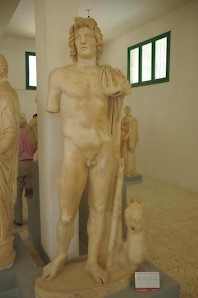
The story of the Philaeni may belong to this age, but we reach more certainty only after the death of Alexander the Great, the Macedonian conqueror of Egypt and the Achaemenid Empire. He was succeeded in Egypt by his friend Ptolemy. At this time, there was civil war in Cyrenaica: a group of exiles had invited a mercenary leader named Thibron, who happened to own a large sum of money (the amount of taxes once paid by Babylonia). Thibron arrived and expelled his opponents; they fled to Egypt, where they requested the support of Ptolemy. He sent his general Ophellas, who restored order and united all towns in one single province (322). From now on, Cyrene and the Cyrenaica were part of the Ptolemaic Empire, although there were periods of independence.
At this time, there were five important towns, which were called the pentapolis.
- Cyrene (Shahhat)
- Barca (Al-Marj)
- Euesperides (Banghâzi)
- Apollonia (Sûsah); this was the port of Cyrene
- Taucheira (Tûkrah)
Ophellas added a sixth city, Ptolemais (Tulmaythah), and remained in charge of the region until he was murdered during a Greek expedition against Carthage (308). Immediately, Cyrenaica tried to regain its independence, but Ptolemy of Egypt (now king), sent a general named Magas (301), who ruled the province. However, when Ptolemy had been succeeded by his son Ptolemy II Philadelphus, Magas allied himself with the Seleucid king Antiochus I Soter and started a kingdom of his own (275). He was sufficiently powerful to be known in far-away India, where he is mentioned in the rock edicts of the Mauryan emperor Ashoka (272-232).
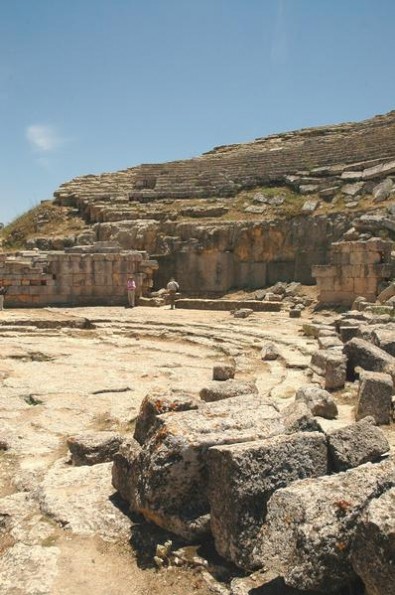
He died in 250 or 249, and was succeeded by Demetrius the Fair, the son of Demetrius Poliorcetes, one of the Diadochi. The younger Demetrius was murdered after a brief reign, and Cyrenaica again became part of the Ptolemaic Empire. It lasted some eighty years.
A second period of independence was the reign of Physcon, a son of the Egyptian king Ptolemy V Epiphanes. In 163, he was made governor of the Cyrenaica, but he met with much opposition, which he overcame with support from Rome. In this way, Cyrenaica became a Roman protectorate. This lasted until 145, when Physcon, as Ptolemy VIII, was unexpectedly made king of Egypt.
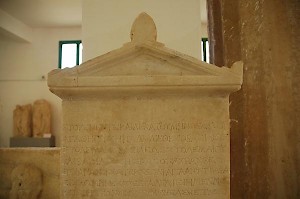
When he died in 116, he appointed his son Ptolemy Apion as successor in Cyrenaica. The reign of the last king of independent Cyrenaica lasted twenty years, and when he died in 96, the Romans learned that they had inherited Cyrene and the other towns. Eighteen years later, they made it a province (together with Crete). During the civil wars it was briefly ruled by Selene, the daughter of the Roman general Mark Antony and the last Ptolemaean queen, Cleopatra VII Philopator.
Roman Age
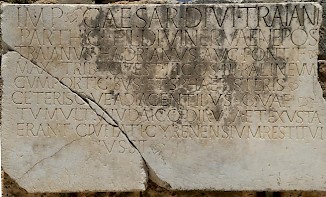
After this reign, Cyrenaica enjoyed a lasting peace under a Roman governor. The emperor Augustus presented its capital with a new temple for the god Zeus (with a replica of Phidias' famous statue of Zeus), and other emperors gave similar presents. The native population continued its cults, but with Roman influences (e.g., Slonta). The tranquility was only briefly interrupted in 115, when a Jew named Lukuas claimed to be the Messiah and launched a revolt. There were large-scale destructions, but ultimately, the Romans regained their province, and the emperor Hadrian ordered the Jews to pay for the reconstruction.
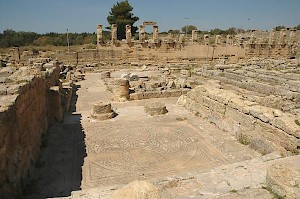
The second century was an age of prosperity, and witnessed the rise of a class of very wealthy people, like Jason Magnus. They were well-known sponsors of the town, contributing many a public building.
In Late Antiquity, the Roman province was destroyed by nomadic raids. The epistles and the Catastasis of bishop Synesius, written between 400 and 414, offer many sad stories; by c.410, Cyrene had been abandoned to the Laguatan nomads. For Cyrene, the measures of the Ananeosis, Justinian's renewal of the Cyrenaica, were too late.
Famous Cyrenaeans
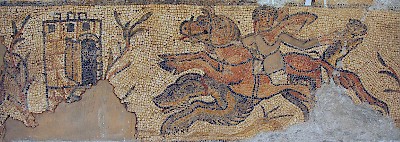
Cyrene was the hometown of several famous Greek scholars and scientists. Eugammon (sixth century) was one of poets of the Epic Cycle. The mathematician Theodorus (c.465-399) developed the theory of irrational numbers (e.g., the root of three). His namesake Theodorus "the godless" (c.335-c.260) seems to have been one of the founders of atheism. His younger contemporary Callimachus is considered to be one of the most important poets of antiquity, and Callimachus' student Eratosthenes (276-193) will forever be remembered as the first one to measure the circumference of the earth (which he thought was 43,500 kilometers). In philosophy, the Cyrenaean school taught that the best thing in life is pleasure.
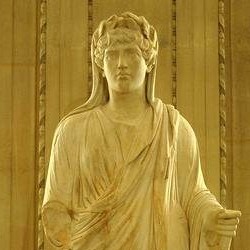 Cyrene, Statue of Antinous |
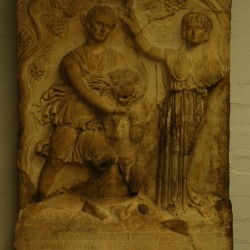 Cyrene, Temple of Aphrodite, Relief of the nymph killing a lion |
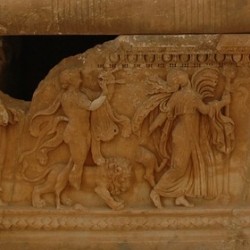 Cyrene, Dionysiac sarcophagus |
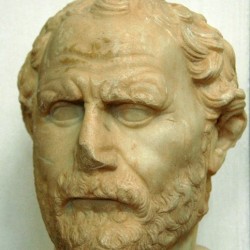 Cyrene, Uptown, Agora, Demosthenes |